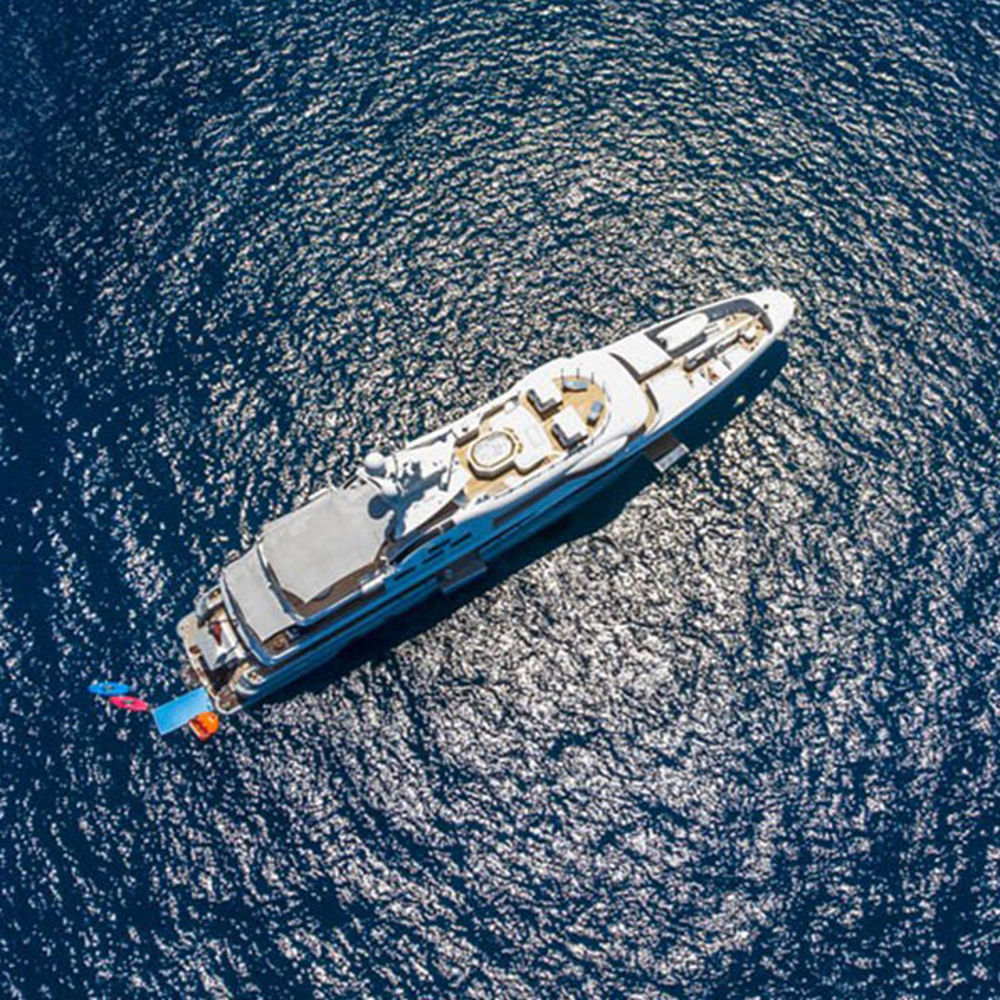Ranko Petkovic, Lead Specialist at LR, looks at the challenges of using glass on luxury vessels and how new approaches are helping to tackle age-old challenges.
Superyachts represent a major investment, so it’s understandable that owners want to ensure that a vessel is designed to offer the best possible views of the surrounding oceans. In this article, Ranko Petkovic, Lead Specialist at LR, looks at the challenges of using glass on luxury vessels and how new approaches are helping to tackle age-old challenges.
For superyacht manufacturers and owners alike, glass is rapidly becoming one of the dominant themes when it comes to future design. Looking to maximise the value of their investment, owners quite naturally want to ensure that the vessel they’ve spent so much on provides them with ample views of the ocean and its surroundings.
This dichotomy has prompted superyacht designers to consider alternative ways to include glass in the build, and in recent years, LR has been helping some of the world’s most prestigious shipyards put those innovative new methods to the test.
Size creates complications
One of the primary issues with the use of glass on superyachts is that owners tend to favour large panels. Some of the design arrangements that LR has consulted on in recent years have included proposed panels as large as 6 x 10m. This presents an immediate problem because the machines used to harden glass to an appropriate level for use on a yacht aren’t able to meet that scale; the world’s largest glass hardening machine is still only 4m wide at present, and the sheer size of the proposed panels creates huge logistical problem.
Even when proposals do align with current glassmaking capabilities, quality can be an issue. The larger a glass panel is, the thicker it needs to be – but the thicker it is, the weaker a piece of glass becomes thanks to the limited chemical hardening depth. Additionally, thinner panes of glass are likely to have fewer imperfections than thicker ones. Imperfections have a detrimental effect on the overall strength but also becomes highly important when considering the overall aesthetic appeal of a vessel like a superyacht.
The traditional solution to this problem relies on increasing the number of mullions in the design. But while mullions provide the structural support that larger panes require, they introduce their own problems as well: smaller mullions are unlikely to provide the strength required to deal with the various stresses, and larger ones – while more robust – block much of the view, undermining the overall objective.
Bold approaches offer a glimpse of the future
One way in which superyacht designers are tackling the issue of glass is by disconnecting the glass carrying structure from the rest of the vessel and using the glass as an essential structural element. This bold move requires using “exotic” materials like carbon fibre reinforced composites and novel production methods like adhesive bonding.
A typical example would be a carbon fibre subframe, using laminated structural glass as part of the structure. This glass-carbon fibre subframe is then bonded to the ship structure using a suitable high-tech adhesive. However, these large structural voids in the hull create stiffness and strength challenges for the ship itself and require designers and builders to maintain a careful balancing act between the LR rules, risk assessment, strength, stiffness and safety requirements.
Another potential option for increasing the amount of glass used in the design is to add larger portlights to the buoyant areas of the hull. Any portlight, of course, requires an accompanying deadlight, and regulations state that a deadlight must be able to be fitted by a single person. With a deadlight of anything above 1m likely to weigh in excess of 150kg, this puts them well beyond the safe limit for installation.
One solution to this that LR has helped to safety test in recent times involves the use of what is essentially a glass deadlight. EN356-tested glass, capable of remaining functional after taking the impact of three 4kg steel balls dropped from a 9m height, is fitted in place of a ductile deadlight. Nitrogen is then injected between the port- and deadlights in order to avoid condensation.
Superyacht glass requires careful attention
The discussion around glass is only likely to increase further as new ideas and new thinking help to overcome some of the most common barriers preventing it from more widespread use in superyacht design. Wherever that conversation leads, though, glass will always require careful attention and rigorous testing.
Even today, with all the progress that has been made, around 20% of laminated glass windows need to be replaced within seven years due to delamination. ISO11336 demands confidence, not defined values, about the strength of panels. And errors in edge preparation can greatly undermine the strength and durability of glass, reducing it by as much as 80%. These issues can only be mitigated with expert safety factor and risk assessment, something that LR is only too happy to provide.






